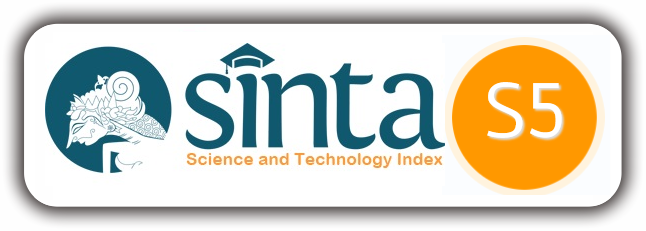THE THE EFFECT OF BANK INDONESIA CERTIFICATES, INFLATION, EXCHANGE RATE, GOVERNMENT REVENUE AND GOVERNMENT EXPENDITURE TO YIELD RETAIL SUKUK
-
DOI:
https://doi.org/10.33827/akurasi2022.vol4.iss2.art159Keywords:
: Macroeconomic Indicators, Sukuk Negara, Retail Sukuk Yield, Vector Auto Regression – Vector Error Correction Model.Abstract
This study discusses the effect of Bank Indonesia Certificates, Inflation, Exchange Rate, Government Revenue, and Government Expenditure to Yield Retail Sukuk SR008 using the Vector Auto Regression (VAR) – Vector Error Correction Model (VECM) method. The result of this study based on the VECM test results, it can be concluded that a significant variable that positively influences yield in the short term are Inflation and Government Revenue variable. In the short term, inflation and government revenue affect the yield requested by investors. The government will respond to inflation fluctuations by changing Bank Indonesia Certificates, and ultimately this will affect yield. Declining government revenue will cause an increase in the issuance of SBN, and this in the law of demand and supply will affect yield. While in the long term, the variables that significantly affect positively are the Bank Indonesia Certificates, Inflation, Government Revenue. As in the short term, inflation and government revenue affect yield in long term. Then the variable that affects negatively is the Government Expenditure. As in the short term, government spending in the long term also does not affect the SR008 yield. As in the short term, inflation and state income affect yield.
References
www.bps.go.id
www.djpb.kemenkeu.go.id
www.djppr.kemenkeu.go.id
Abustan, A., & Mahyuddin, M. (2009). Analisis Vector Auto Regressive (VAR) Terhadap Korelasi Antara Belanja Publik Dan Pertumbuhan Ekonomi Di Sulawesi Selatan, Tahun 1985-2005. Jurnal Ekonomi Pembangunan: Kajian Masalah Ekonomi Dan Pembangunan, 10(1), 1. https://doi.org/10.23917/jep.v10i1.805
Adiwibowo, P., & Sihombing, P. (2019). Determinant Of Government Bond Yields. 1(1), 86–99. https://doi.org/10.31933/DIJDBM
Afiat, M. N. (2015). Volume XVI Tahun 8, Desember 2015 hal 20-26. Jurnal Ekonomi Pembangunan FE-Unhalu, XVI, 20–26.
Ariff, M., Chazi, A., Safari, M., & Zarei, A. (2017). Significant Difference in the Yields of Sukuk Bonds versus Conventional Bonds. Journal of Emerging Market Finance, 16(2), 115–135. https://doi.org/10.1177/0972652717712352
Ascarya. (2013). Analysis of Financial Crisis and How to Prevent It in Islamic Perspective using Vector Error Correction Model •. The 9th International Conference on Islamic Economics and Finance, (2), 9–10.
Ayuningtyas, R. D. (2017). Faktor-Faktor Yang Mempengaruhi Harga Obligasi Syariah Korporasi Di Indonesia (Periode Januari 2010- Juli 2015). Journal of Islamic Economics Lariba, 3(1), 13–22.
Basuki, T. A. (1994). Aplikasi Model VAR dan VECM dalam Ekonomi. (1), 156–159.
Bogdan, S. (2015). Estimating Risk on the Capital. 6(1), 165–175.
Direktorat Pembiayaan Syariah DJPPR, Kementerian Keuangan . (2015). Sukuk Negara Instrumen Keuangan Berbasis Syariah . Jakarta Pusat: Direktorat Pembiayaan Syariah DJPPR, Kementerian Keuangan dengan Asian Development Bank.
Gujarati, D. N. (2004). Basic Economettrics. In The McGraw-Hill. https://doi.org/10.1126/science.1186874
Hariyanto, E. (2020). Potensi dan Strategi Penerbitan Blue Sukuk. Indonesian Treasury Review Jurnal Perbendaharaan, Keuangan Negara Dan Kebijakan Publik, 5(2), 151–170.
Igfirly, F. P. (2018). Pengaruh Indikator Makroekonomi, Volume Perdagangan, dan Kepemilikan Asing terhadap Yield SBSN : Analisis Weighted Average Yield (WAY) SBSN di Pasar Sekunder Domestik Periode 2013-2017.
Iskandar, M., & Ridwan, R. (2019). Pengaruh Penerbitan Sukuk Terhadap Reaksi Pasar (Survey Terhadap Perusahaan-Perusahaan Yang Menerbitkan Obligasi Syariah Yang Terdaftar Dibursa Efek Indonesia Selama Tahun 2015). Jurnal Ilmiah Mahasiswa Ekonomi Akuntansi, 4(3), 496–503. https://doi.org/10.24815/jimeka.v4i3.12583
Kurniasih, A., & Restika, Y. (2015). The Influence of Macroeconomic Indicators and Foreign Ownership on Government Bond Yields: A Case of Indonesia. Mediterranean Journal of Social Sciences, 6(5), 34–42. https://doi.org/10.5901/mjss.2015.v6n5s5p34
Laily Farikhatun Ni’mah, A. S. (2019). Analisis Determinan Volume Perdagangan Sukuk Negara Ritel seri SR-007 . Jurnal Keuangan dan Perbankan Syariah.
Lixin, S. (2011). Monetary Transmission Mechanisms and the Macroeconomy in China (The University of Birmingham). Retrieved from papers3://publication/uuid/09342668-4C75-4897-B8D0-BA4FA6D64EB4
Maghyereh, A. I., & Awartani, B. (2016). Dynamic transmissions between Sukuk and bond markets. Research in International Business and Finance, 38, 246–261. https://doi.org/10.1016/j.ribaf.2016.04.016
Organisation for Economic Co-Operation and Development (OECD). (2018). Retrieved from https://data.oecd.org/price/inflation-cpi.htm
Sari, N. W. L. N., & Abundanti, N. (2015). Variabel-Variabel yang Mempengaruhi Yield Obligasi pada Perusahaan yang Terdaftar di Bursa Efek Indonesia. E-Jurnal Manajemen Universitas Udayana, 4(11), 3796–3824.
Sholikhin, M. Y., Amijaya, R. N. F., & Herianingrum, S. (2020). The Effect Of Sukuk On The Profitability Of Islamic Bank In Indonesia. International Journal of Islamic Business Ethics, 5(1), 33. https://doi.org/10.30659/ijibe.5.1.33-46
Suciningtias, S. A. (2019). Macroeconomic Impacts on Sukuk Performance in Indonesia: Co-integration and Vector Error Correction Model Approach. Journal of Islamic Finance (Special Issue) (2019) 117 – 130, 8, 117–130.
Suharsono, A., Aziza, A., & Pramesti, W. (2017). Comparison of Vector Autoregressive (VAR) and Vector Error Correction Models (VECM) for Index of ASEAN Stock Price. AIP Conference Proceedings, 1913(December). https://doi.org/10.1063/1.5016666
Sulistiana, I. (2017). Model Vector Auto Regression (VAR) and Vector Error Correction Model (VECM) Approach for Inflation Relations Analysis, Gross Regional Domestic Product (GDP), World Tin Price, BI Rate and Rupiah Exchange Rate. Integrated Journal of Business and Economics, 1(2), 17–32. https://doi.org/https://doi.org/10.5281/zenodo.1147673
Sumantri, J. (2017). Studi Pendahuluan Pengaruh Penerimaan dan Pengeluaran Negara terhadap Imbal Hasil Mismatch Treasury Bills. Jurnal Pajak Indonesia, 1, 52–64.
Wafi, A. Z. (2017). Faktor Determinan Rendahnya Likuiditas Project Based Sukuk di Pasar Sekunder. https://doi.org/10.1017/CBO9781107415324.004
Wibowo, H. (2006). Analisis Pengaruh Inflasi, Kurs, dan Tingkat Suku Bunga Sertifikat Bank Indonesia (SBI) terhadap Yield Sukuk Negara Ritel seri SR001 di Pasar Sekunder pada Tahun 2009 - 2011. 1–21.
Wibowo, H. (2012). Faktor-Faktor yang mempengaruhi yield sukuk negara ritel seri SR001 di Pasar Sekunder tahun 2009-2011. BPPK (Badan Pendidikan dan Pelatihan Keuangan).
Yusuf, A., & Prasetyo, A. D. (2019). The Effect of Inflation, US Bond Yield, and Exchange Rate on Indonesia Bond Yield. Jurnal Perspektif Pembiayaan Dan Pembangunan Daerah, 6(6), 649–656. https://doi.org/10.22437/ppd.v6i6.6853
Zarei, M. A. (2017). Significant Difference in the Yields of Sukuk Bonds versus Conventional Bonds. Journal of Emerging Market Finance 16(2) 115–135
Zou, X. (2018). VECM Model Analysis of Carbon Emissions, GDP, and International Crude Oil Prices. Discrete Dynamics in Nature and Society, 2018, 11. https://doi.org/10.1155/2018/5350308







